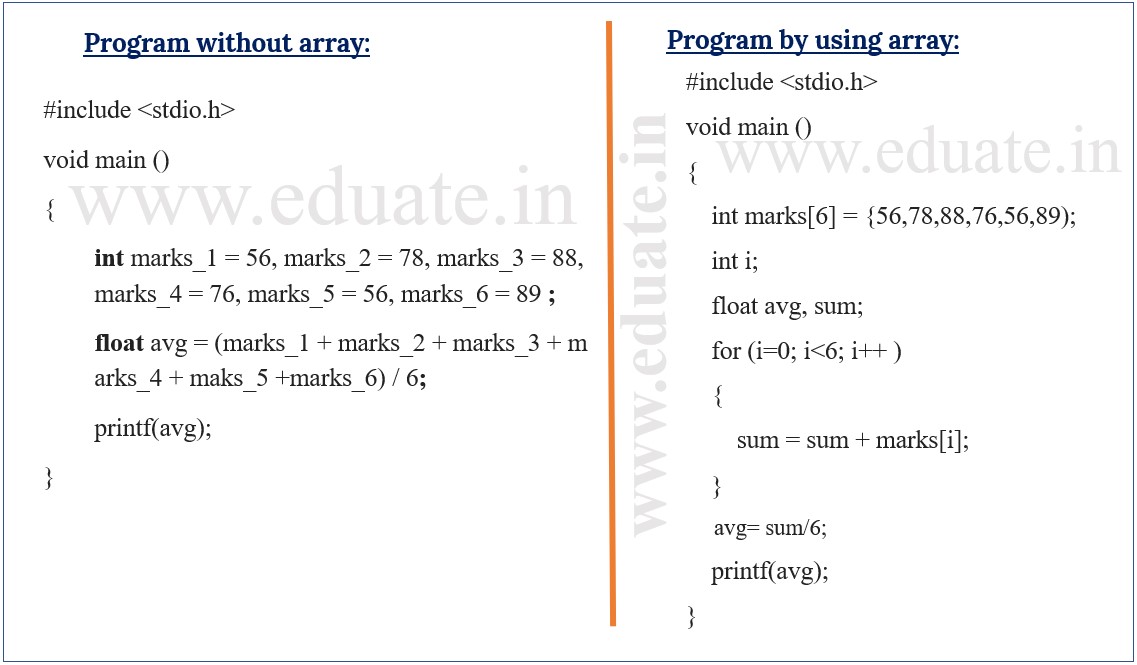Introduction to an Array in data structure :
Hello readers, The Theory of Computation welcomes you. In this article let’s understand the concept of an Array in the data structure.
To handle data efficiently in memory, multiple data structures were available like linked-list, etc. An array is one among them. Through the array, homogenous data were stored in a contiguous memory location. For example, if you want to store the roll number of five different students through an array then the address location of all the roll numbers were in continuous form. Let the roll number of five students will be A01, A02, A03, A08, A13 then in the array it will store like:

Memory location address is randomly taken, generally by default initial address is 0.
Array elements are accessed using the subscript (Square Bracket) operator []. By default, the lowest subscript (initial index) is 0 and the highest subscript is (size of the array–1).
The syntax for array declaration:
The Declaration of an array is quite similar to a normal variable declaration. When we declare an array, the array variable should be followed by subscripts (square brackets) to specify the size of the array. The general form for an array declaration would be:
VariableType varName[dim1, dim2, …, dimN];
VariableType may be int, float, char etc… & varName is variable name.
Array declaration Example: int num [5];
The elements field within square brackets [], representing the number of elements in the array, must be a constant expression since arrays are blocks of static memory whose size must be known at compile time.
Initializing Arrays:
By default, are left uninitialized. This means that none of its elements are set to any particular value; their contents are undetermined at the point the array is declared.
The initializer can even have no values, just the braces. Understand the concept through example,
int num[5] = { };
This creates an array of five int values, initialized with a value of zero:
When to use Array
During programming, when we want to store a large amount of similar data it may require assigning that much of variables. It may be complex to remember the names of all such data with corresponding variables. It is better to define an array and store all the elements in it.
The following example illustrates, how an array can be useful in writing code for a particular problem.
In the following example, we have the marks of a student in six different subjects. The problem intends to calculate the average of all the marks of the student.
In order to illustrate the importance of an array, we have created two programs, one without using an array and the other involving the use of an array to store marks.
Properties of an array:
-
- All array elements have the same data type and size.
- The array’s elements are kept in consecutive memory locations, with the initial element having the least memory address.
- Since we can determine the address of each array element using the base address provided and the size of the data element, array elements can be randomly accessed.
- The ability to sort and search within an array makes them valuable.
Operations performed using arrays:
-
- Traversal – To print the elements on an array.
- Insertion – Insertion operation is performed to insert an element at a particular index of an array.
- Deletion – It is used to delete an element from a particular index.
- Search – It is used to search an element using the given index or by the value.
- Update – It updates an element at a particular index.
Benefits of Array
-
- The group of identically named variables is referred to as an array. As a result, it is simple to recall the names of all the array’s elements.
- It is relatively easy to navigate an array; all we need to do is increase the array’s base address to visit each element one at a time.
- The index can be used to directly access any element in the array.
Problems with Array
-
- The array is uniform. In other words, it allows for the storage of elements with similar data types.
- An array has a static memory allocation, meaning that its size cannot be changed.
- Memory will be wasted if we save fewer elements than the set maximum.
I hope a brief Idea about an Array is clear to you. Please do comment your valuable suggestions.
Also Understand the concept about :
Questions arise from the array may be in the form:
-
-
- What do you mean by array?
- When to use an array data structure?
- What are the properties of an array?
- What are the different operations performed on an array?
-




